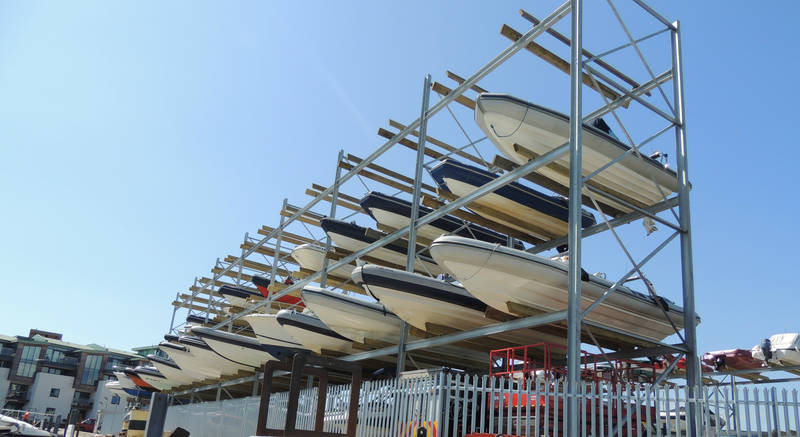A friend stores his 3500± pound boat in his boat house at his cottage (summer home), by lifting the boat up after bringing it into the boathouse and inserting two wood beams, one near the front of the boat and the other near the back of the boat, and then lowering the boat onto the two beams. The beams are currently wood and he says the wood is rotting so he wants to replace the wood beams with steel beams, and he wants the beams to be as light as possible, because they have to be manhandled into place. I have not seen the boathouse. He says that the existing wood beams are "about" 9" square.
I would calculate the resisting moment of the new beams as though they are laterally unsupported for the full span. I think his concerns with wood rotting could be addressed by using pressure treated incised timber, then soaking the sawcut end of each timber in preservative, and as an added measure coat the entire surface with preservative even though the beam is pressure treated. Re-coat every few years.
My question is: would the timber beams eventually twist?
If so, then steel would be the better choice I think, although it would have to be protected from corrosion.
I would calculate the resisting moment of the new beams as though they are laterally unsupported for the full span. I think his concerns with wood rotting could be addressed by using pressure treated incised timber, then soaking the sawcut end of each timber in preservative, and as an added measure coat the entire surface with preservative even though the beam is pressure treated. Re-coat every few years.
My question is: would the timber beams eventually twist?
If so, then steel would be the better choice I think, although it would have to be protected from corrosion.



